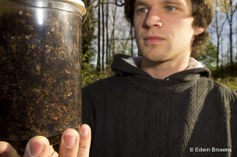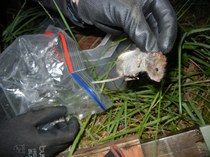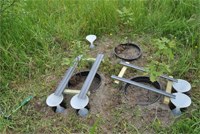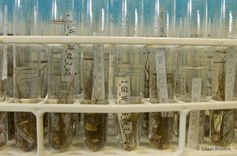Biodiversity - ecosystem functioning
The functional biodiversity research at ForNaLab focuses on the effects of tree species diversity on the associated diversity of, e.g., the herb layer and soil-dwelling arthropods, and ecosystem services such as tree growth and nutrient cycling. We aim to (1) provide hands-on advice to forest managers on which tree species or tree species combinations maximize forest ecosystem performance and functioning in various environmental contexts and (2) inform policy makers about the role of biodiversity conservation in forests.
The lab established a big experiment (FORBIO) and an observational network (TREEWEB) for studying the effects of tree diversity in Belgium, coordinates a Belgian consortium on functional tree diversity research (treediv|Belgium), designed a European network of tree diversity research plots (FunDivEUROPE), and co-coordinates a European research network on ecosystem services of small forest fragments (smallFOREST) and a global network of tree diversity experiments (TreeDivNet).
PASTFORWARD is a large research project focusing on herb layers in temperate forests. This project investigates how herb layer diversity and functioning changes over time in response to global change.
FORMICA is a large research project that aims to quantify and understand the role of microclimatic buffering in modulating forest plant responses to macroclimate warming.
Current projects
- AGFORPRO: Agroforestry in Flanders: an economically viable solution for the demand for agro-ecological production methods (more info)
- Ecological interactions between tree, soil, crop and environment in Flemish agroforestry-systems (more info)
- Changes in ecosystem (multi)functionality in semi-natural grasslands undergoing restoration management (more info)
- Climate change and plant responses in ecological corridors of agricultural landscapes along a latitudinal gradient (more info)
- Development trajectories in below-above-ground plant communities driven by nutrient availability and soil biota (more info)
- Effects of plant-soil feedbacks on colonization rates of forest herbs along a latitudinal gradient (more info)
- FORBIO: a large-scale field experiment on the effects of tree species diversity (more info)
- FORMICA: Microclimatic buffering of plant responses to macroclimate warming in temperate forests (more info)
- Impact of forest conversion on Lyme disease risk (more info)
- Impact of neighbourhood diversity on the growth of oak and pine (more info)
- PASTFORWARD: Development trajectories of temperate forest plant communities under global change: combining hindsight and forecasting (more info)
- Quantifying the overstorey-understorey diversity relationships in forests (more info)
- Quantifying understorey responses to overstorey opening to better predict tree regeneration success (more info)
- SmallFOREST: Biodiversity and ecosystem services of small forest fragments in European landscapes (more info)
- Ecosystem services of soil-dwelling arthropods in small forest remnants (more info)
- The importance of microclimate for the prediction of forest plant responses to global warming (more info)
- The influence of small forest fragments on pollination services in an agricultural landscape (more info)
- TREEWEB: Scaling up functional biodiversity research from individuals to landscapes and back (more info)
- Woody networks in agricultural landscapes: floristic diversity, conservation and management scenarios (more info)
- Forest biodiversity and multifunctionality drive chronic stress-mediated dynamics in pathogen reservoirs (more info)
Finished projects
- Assessment of the effects of tree species diversity on FORest BIOdiversity and ecosystem functioning (FORBIO) (more info)
- Can microbial community structure and selective nitrogen uptake explain differences in forest nitrogen dynamics (more info)
- Early tree diversity effects on tree growth, litter decomposition and herbivory (FORBIO) (more info)
- Effects of tree species induced soil acidification on litter and herb layer dynamics along a natural gradient of soil buffering capacity (more info)
- FunDivEUROPE: Functional significance of forest biodiversity in Europe (more info)
- Impact of converting former pine plantations on the abundance of the sheep tick (Ixodes ricinus L.) (more info)
- Impact of hemiparasitic plants on grassland communities and biogeochemistry (more info)
- Impact of tree species mixture on chemical forest floor characteristics (more info)
- The impact of the variation in tree leaf-out phenology on forest understorey plant communities (more info)
- Effects of temperature during seed development on progeny performance (more info)
- FORBIOClimate: adaptation potential of biodiverse forests in the face of climate change (more info)
- The interplay of biodiversity and environmental stress for ecosystem functioning (more info)



